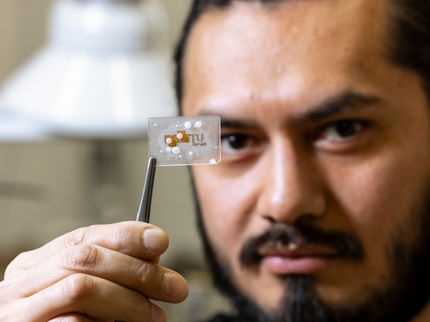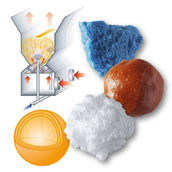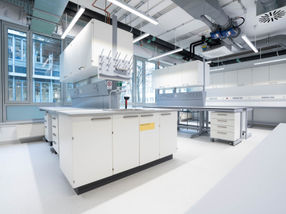Cellulose esters developed for bio-based reactive resins and high-performance adhesives
Successful application in reactive dowel compounds and LED light-curing adhesives - manufacturer wanted for market launch
Advertisement
The Fraunhofer Institute for Structural Durability and System Reliability LBF has developed multifunctional resin components made of cellulose for industrial applications. The researchers have demonstrated their suitability as reactive resins in the construction sector and as LED light-curing industrial adhesives.

Cellulose acrylates for industrial adhesives in the electronics sector: This application is ready for the market and Fraunhofer LBF is currently looking for interested manufacturers.
Hathairat – stock.adobe.com, generated with AI
Wood pulp is a suitable source of raw materials, which can score points for sustainability and comparatively low costs thanks to its extraction from wood waste.
The project was funded by the Federal Ministry of Agriculture, Food and Home Affairs (BMLEH) via the project management agency Fachagentur Nachwachsende Rohstoffe e. V. (FNR).
New synthesis route for bio-based methacrylates
In the project, the scientists produced and investigated structurally different cellulose esters, including those with flame-retardant, phosphorus-containing, sugar alcohol-based groups and esters that contained both acrylate and diacrylate groups.
For production, they used a method that had previously been developed at the Fraunhofer LBF. This synthesis method had to be adapted to produce cellulose-based methacrylates, for which the researchers identified new, highly active esterification catalysts, among other things.
Both cotton and chlorine-free bleached long-fiber wood pulp from wood waste were suitable as a raw material source, with the latter being advantageous from an economic and ecological point of view. Other types of pulp can also be used.
Application in reaction doweling compounds ...
The construction equipment supplier Hilti tested the cellulose methacrylates in reaction doweling compounds. As a result, the resins met important mechanical parameters and requirements for hydrolytic stability while at the same time improving viscosity properties.
They were also suitable for thickeners and, in contrast to established products, did not cause any deterioration in strength.
... and in industrial adhesives
The industrial adhesives manufacturer Hoenle Adhesive Systems (formerly Panacol) again tested the cellulose acrylates as LED light-curing high-performance adhesives for electronics applications. Here, too, the results were promising: the acrylates mixed well with certain reactive diluents, produced clear, hard and firmly adhering layers on glass and various plastics and also exhibited good viscosity properties and a high glass transition temperature.
As a further variant, the research team synthesized a clear, transparent, phosphorus-containing and flame-retardant coating for acrylic glass.
LBF is looking for manufacturers
The bio-based acrylates are ready for the market and the Fraunhofer LBF is currently looking for an interested manufacturer. The conditions for the commercial use of methacrylates as thickening agents are also in place. The application as a resin component in reaction dowel compounds still requires further structural adjustments.
The researchers see further potential areas of application in paints and wood coatings. The phosphorus-containing cellulose esters are also generally suitable as flame retardants for plastics; the Fraunhofer-Gesellschaft has patented the manufacturing process for this application.
Note: This article has been translated using a computer system without human intervention. LUMITOS offers these automatic translations to present a wider range of current news. Since this article has been translated with automatic translation, it is possible that it contains errors in vocabulary, syntax or grammar. The original article in German can be found here.




























































